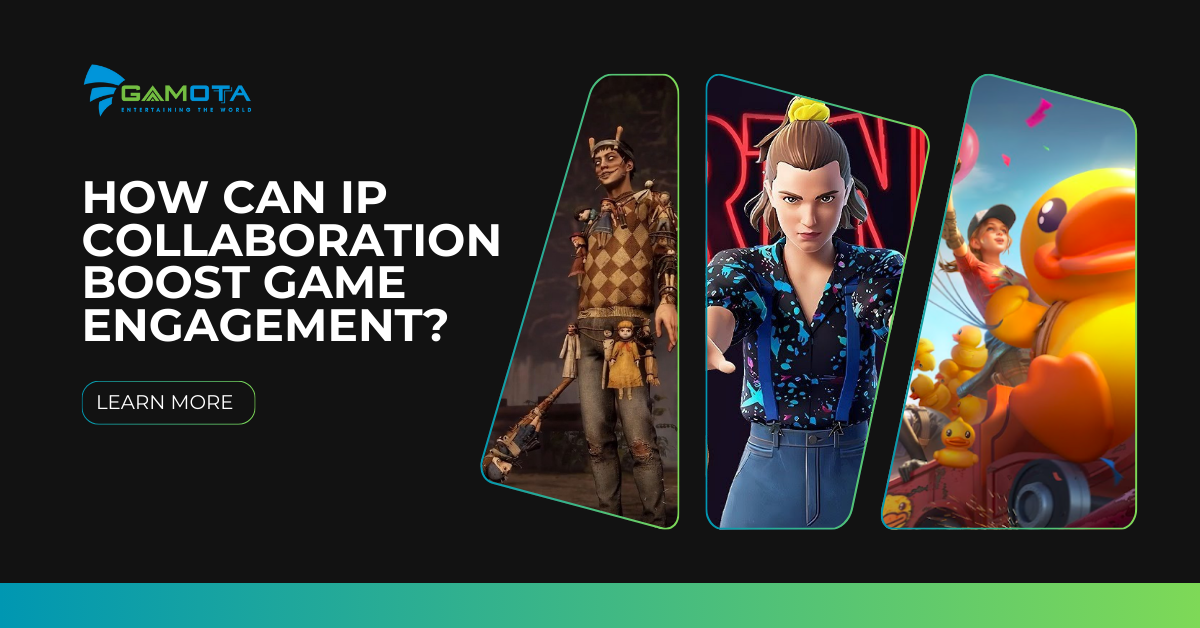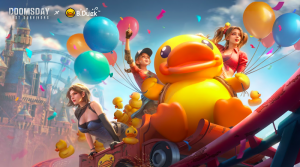To stay competitive, maintaining player engagement and maximizing revenue is critical. Publishers are continually exploring innovative strategies, and one that stands out is IP collaboration.
Integrating popular intellectual properties (IPs) and brands into games helps developers create compelling events, characters, and cosmetics that boost player’s engagement in the long term.
What is IP Collaboration in Gaming?
IP collaboration involves incorporating external brands or IPs into a game, offering players exciting new content. These partnerships range from skins, characters, and items to maps, game mechanics, and event-based gameplay. Successful examples include Fortnite’s collaborations with Marvel and Star Wars or Doomsday: Last Survivors’ partnership with B.Duck.
Such collaborations benefit both game developers and IP holders, providing the former with increased engagement and revenue while giving the latter access to a valuable gaming audience.
Data-Driven Impact of IP Collaboration
According to a report by Newzoo, collaborations between 2021 and mid-2023 showed impressive results:
- Average Engagement Boost: Daily Active Users (DAU) increased by +11% during the first week of a collaboration launch.
- Premium Game Advantages: Pay-to-play titles experienced an even higher engagement spike of +19%.
- Engagement Peak: DAU typically peaks between the 4th and 5th days of the event.
While these effects are often temporary and will return to pre-event levels after a week, they highlight how collaborations create a buzz that can take a game’s community by storm.
Optimizing IP Collaboration Strategies
To achieve maximum success, game developers must align collaborations with their game’s structure, audience, and monetization strategy.
1. Picking the Right IP Fit
The compatibility of the IP with the game is critical. For instance, Doomsday: Last Survivors’ collaboration with B.Duck is an example of aligning a survival strategy game with a playful and vibrant brand. This contrast created a unique, engaging experience that attracted both the game’s hardcore players and casual fans of B.Duck.
2. Customizing for Monetization Models
- Premium Games: Pay-to-play games often rely on downloadable content (DLC) to execute collaborations, using story expansions or character additions to appeal to fans of both the game and the IP.
- Free-to-Play Games: For free-to-play games, cosmetic additions like skins and emotes are popular. These cost-effective implementations ensure players stay engaged without altering the core gameplay.
3. Timing and Marketing
Event timing is vital for collaboration success. Aligning in-game events with major IP launches, such as product campaigns or brand milestones, can amplify impact.
Read more: How to Do Game Marketing for Newbie
Challenges and Opportunities
Despite the proven benefits, the number of IP collaborations has declined post-2021. This drop is attributed to:
- Budget Constraints: Layoffs and reduced marketing budgets in 2022 and 2023 impacted the gaming industry.
- Post-Pandemic Shifts: The surge in gaming activity during the COVID-19 lockdowns tapered off as life returned to normal.
However, this decline doesn’t undermine the strategy’s potential. With the gaming industry shifting towards live-service models, IP collaborations are poised to grow. Live-service games, like Fortnite or Genshin Impact, thrive on regular content updates, providing a natural platform for continuous partnerships.
Case Studies: Success in Action
1. Doomsday: Last Survivors x B.Duck
This collaboration brought together two seemingly opposite worlds: a gritty, post-apocalyptic survival game and a cheerful, travel-loving mascot. Players of Doomsday: Last Survivors were treated to limited-time content, including themed items, events, and challenges featuring B.Duck.
The partnership leveraged B.Duck’s playful appeal to introduce lighthearted elements into a serious survival game. This unique combination boosted player engagement and attracted new audiences who might not have considered the game otherwise.
2. Dead by Daylight’s Horror IP Crossovers
Dead by Daylight’s partnerships with Resident Evil and Ringu highlight how IP fit drives engagement. These collaborations boosted DAU by +31% and +29%, respectively, far exceeding the average. By staying true to its horror roots, Dead by Daylight attracted fans of these franchises while keeping its core audience engaged. Recently, Dead by Daylight has launched Junji Ito’s collection, including a total of 8 freaky skins based on his horror manga.
3. Fortnite’s UGC Ecosystem
Fortnite remains a leader in IP collaborations, leveraging its user-generated content (UGC) platform, Fortnite Creative. This allows brands like Coachella, Stranger Things, and 7-Eleven to create immersive experiences that resonate with Fortnite’s diverse player base.
The Future of IP Collaborations
As the gaming industry continues to grow, the opportunities for IP collaborations have immense potential. The rise of digital media, including anime, manga, and comics, has made crossovers more accessible and cost-effective.
Moreover, as game franchises evolve into live-service ecosystems, the demand for fresh content will drive innovation in IP collaborations. Developers should focus on building sustainable partnerships that not only create short-term excitement but also contribute to long-term brand growth.













